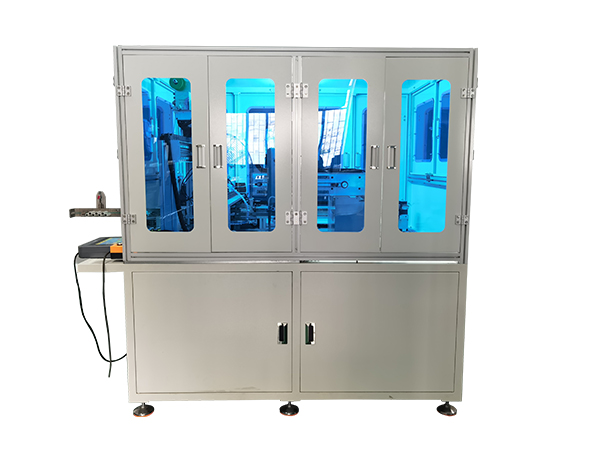Automatic wire welding equipment is a specialized device that realizes welding processes through automation technology. Its core function lies in enhancing welding efficiency, quality and stability, while reducing labor costs and safety risks. The following analysis is conducted from four dimensions: function, application scenarios, technical advantages, and development trends:
I. Core Functions
Automated welding operation
Precise control: By means of servo motors, PLCS (programmable logic controllers) or industrial robots (such as six-axis mechanical arms), the movement trajectory, welding speed and pressure of the welding torch/welding head are precisely controlled to achieve diverse welding methods such as spot welding, seam welding and butt welding.
Multi-process integration: Supports various welding techniques such as laser welding, ultrasonic welding, resistance welding, and argon arc welding, adapting to different material (such as metal, plastic) and thickness requirements. For instance, laser welding is commonly used in car body welding to achieve high-strength and low-deformation connections.
Intelligent parameter adjustment
Adaptive control: Automatically adjust parameters such as current, voltage, and wire feeding speed based on material type, thickness, and welding position. For instance, when welding aluminium materials, the pulse mode is automatically switched to reduce heat input and prevent burn-through.
Temperature closed-loop control: The weld temperature is monitored in real time through an infrared thermometer or thermocouple, and the welding energy is dynamically adjusted to ensure the consistency of the penetration depth.

Quality inspection and feedback
Online inspection: Integrated vision systems (such as CCD cameras) or laser sensors are used to detect defects such as weld width, excess height, and porosity in real time, and automatically mark defective products.
Data traceability: Record welding parameters (such as time, temperature, pressure) and inspection results, generate quality reports, and support process optimization and responsibility traceability.
Ii. Typical Application Scenarios
The automotive manufacturing industry
Body welding: Automatic welding line equipment is used for the splicing of components such as car doors, roofs, and chassis. Through a robot cluster, multi-station synchronous operations are achieved, enhancing the production pace (for example, completing the welding of one body every 45 seconds).
Battery pack welding: In the production of battery modules for new energy vehicles, laser welding equipment achieves precise welding of the battery cell terminals and connecting plates, ensuring low resistance and high reliability (such as welding tensile force ≥200N).
3C electronics industry
Micro-component welding: For micro-components such as camera modules and fingerprint recognition modules in products like mobile phones and tablet computers, ultrasonic welding or hot-press welding technology is adopted to achieve precision welding at the 0.1mm level.
Flexible circuit board (FPC) soldering: Through laser soldering or selective wave soldering equipment, high-density interconnection between FPC and the main board is achieved to meet the thinning and lightness requirements of electronic products.
Aerospace field
Titanium alloy welding: In the manufacturing of key components such as aircraft engine blades and casings, electron beam welding or friction stir welding techniques are adopted to achieve crack-free and low-deformation welding of high-temperature alloys.
Composite material welding: By using laser-arc composite welding technology, the problem of dissimilar material connections between carbon fiber reinforced composite materials and metals is solved.
Medical device industry
Stainless steel instrument welding: In the production of precision instruments such as surgical knives and endoscopes, pulsed laser welding is adopted to achieve spascle-free and low heat-affected zone welding, meeting the requirements of biocompatibility.
Implant welding: For titanium alloy implants such as artificial joints and heart stents, micro-beam plasma welding technology is adopted to ensure welding strength and surface finish.
about
Introduction video case honor partners factoryproduct
Automatic welding line Non-standard customization Automatic soldering Glue/screw lockingnews
dynamic Information faqCustomer Service
contactMr. Xia:+86 186-7696-3763

WeChat QR code

Douyin QR Code
Copyright © 2025 Copyright © Dongguan Chuangxiao Automation Technology Co., Ltd.
本站相关网页素材及相关资源均来源互联网,如有侵权请速告知,我们将会在24小时内删除